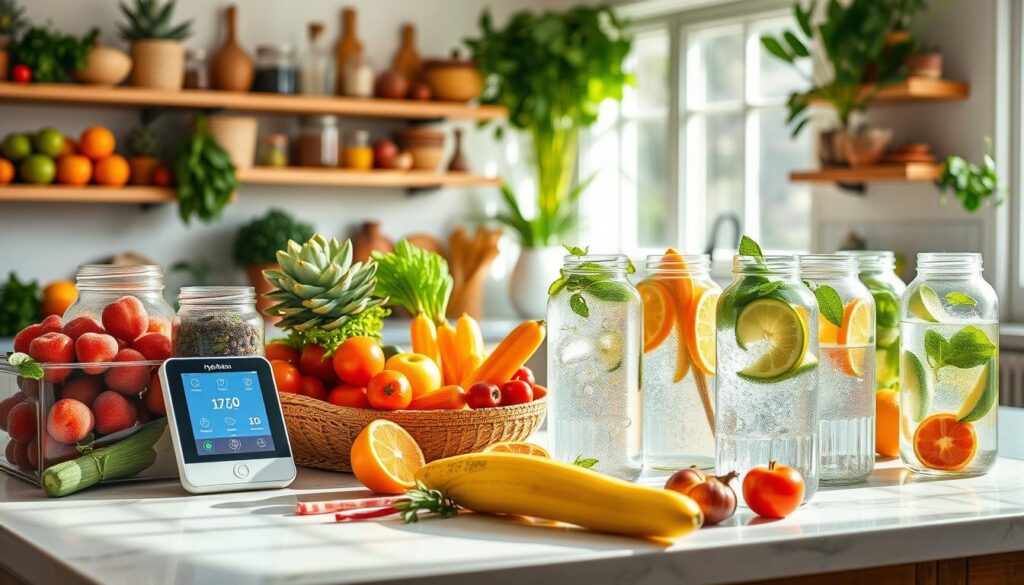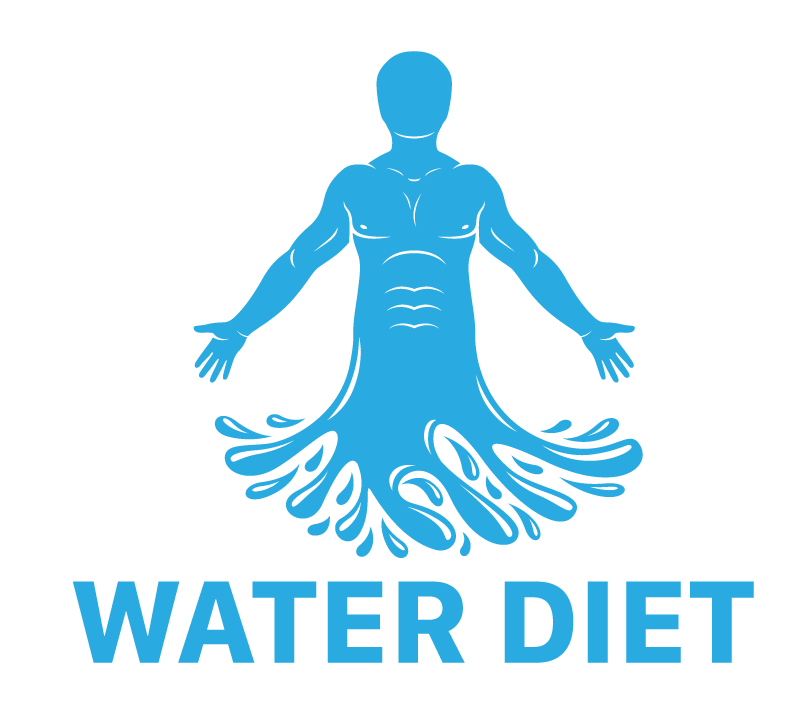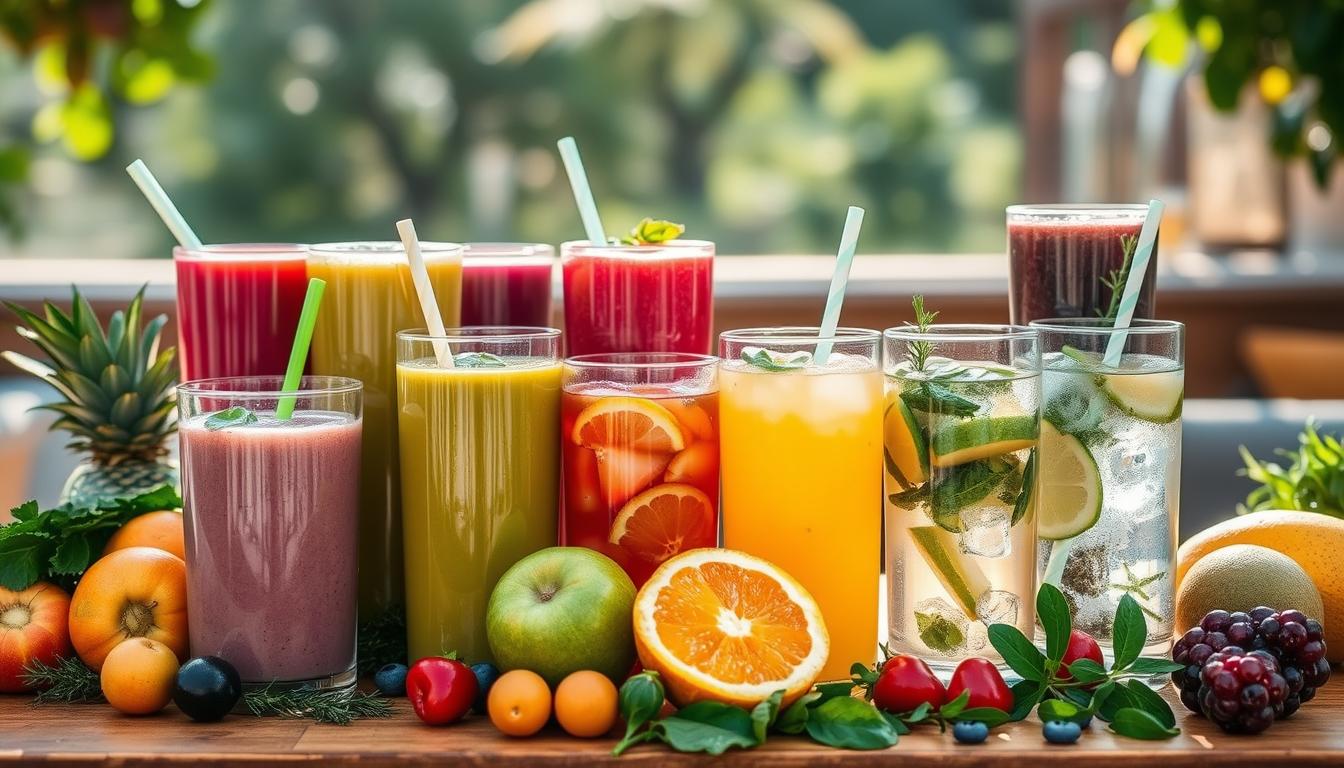I’m always looking for ways to boost my energy and vitality. I found that a Hydration-Focused Liquid Diet refreshes my day and gives me lasting energy. By choosing energy-boosting drinks, I’ve seen how they can speed up my metabolism and keep me hydrated.
I follow the saying, “you are what you drink.” I’ve started drinking more nutrient-rich beverages. Starting my day with water or a protein smoothie has become key to my energy quest.
Studies show that making smart diet changes can really help. Eating complex carbs like bananas can improve workouts. Omega-3s from fish boost brain function and fight fatigue. And lentils offer long-lasting energy with their protein and fiber, all while being affordable.
Key Takeaways
- A Hydration-Focused Liquid Diet can help revitalize and energize your body.
- Drinking the right fluids could potentially speed up your metabolism and improve hydration.
- Consuming energy-boosting beverages can be a strategic way to sustain energy throughout the day.
- Incorporating a variety of nutrient-dense liquids into your diet is essential for optimal energy levels.
- Statistical evidence suggests that certain dietary choices significantly impact workout performance, brain function, and overall energy.
- Adopting a liquid diet can be a budget-friendly approach to boosting your energy.
Introduction to Liquid Diets and Energy Levels
Exploring liquid diets shows a new way to get nutrients and stay active. It’s key for those looking to boost energy levels and improve health.
A liquid diet includes juices, smoothies, and broths. It aims to give 1,500 calories and 45 grams of protein daily. This helps keep energy up without solid foods.
Yet, it’s not for everyone. It’s mainly for short-term use, like before medical tests. It’s not good for long-term eating because it’s too limited.
Here’s a look at what you might eat on different liquid diets:
| Types of Diet | Calories | Protein (grams) | Typical Duration | Main Purpose |
|---|---|---|---|---|
| Full Liquid Diet | 1,500 | 45 | Up to 2 weeks | Transition to solid foods, short-term management |
| Clear Liquid Diet | Varies (low) | Minimal | 1-3 days | Preparation for medical procedures |
| Example Daily Menu | Gelatin, fruit juice, broth, water, occasional popsicle or soda | |||
Starting a liquid diet depends on your health goals and doctor’s advice. It’s more than a diet; it’s a healthy choice for better hydration and nutrition.
Understanding Liquid Nutrition and Hydration Benefits
Exploring liquid nutrition and its hydration benefits is key for energy and metabolism. Moving from solid foods to a liquid diet for energy might seem hard. But, the benefits are big.

The Role of Liquids in Boosting Metabolism
Liquids play a big role in our diet, helping our metabolism. A hydration-focused nutrition plan, with water and energy drinks, boosts metabolism. This improves energy for daily tasks and helps with weight management by keeping you full and reducing calories.
Comparing Solid Foods versus Liquid Diet for Hydration
Solid foods are important for nutrients, but a liquid diet for energy offers quick hydration. Liquids digest faster, letting our bodies absorb nutrients and hydrate quicker than solids.
| Aspect | Solid Foods | Liquid Nutrition |
|---|---|---|
| Hydration Speed | Slower, as digestion is required | Faster, as absorption is quicker |
| Energy Efficiency | Energy released slower | Immediate energy boost |
| Digestive Load | Higher, more strain on digestion | Lower, easier on the stomach |
| Nutrient Absorption | Varies by food type and preparation | Typically more consistent |
Choosing a liquid diet helps with quick nutrient intake and keeps you hydrated. This is vital for your health and better physical performance.
Boosting Your Energy Levels with a Hydration-Focused Liquid Diet
I’ve always looked for natural ways to boost my energy. A hydration-centric liquid diet has been very helpful. It’s filled with hydrating liquids and nutrients that increase energy and support an active lifestyle. Let’s explore how a liquid diet can boost your vitality and well-being.
Drinking plenty of water is key. Water makes up about 60% of our body and is vital for many functions. Staying hydrated means drinking water and eating foods with high water content like cucumbers and strawberries. These foods help keep your cells hydrated, which is crucial for energy production.
Also, eating nutrient-rich liquids every three to four hours keeps your energy steady. Include proteins and complex carbs in your liquid meals. Smoothies made with oats, quinoa, and sweet potatoes are great for sustained energy. Adding proteins from dairy or nuts keeps you full and energized.
| Nutrient | Sources | Benefits |
|---|---|---|
| Water | Water, cucumbers, watermelon | Improves overall body function and energy production |
| Proteins | Nuts, dairy, legumes | Sustains energy, builds and repairs tissues |
| Complex Carbohydrates | Oats, quinoa, whole grains | Provides steady energy release |
| Vitamins and Minerals | Leafy greens, nuts, fatty fish | Supports energy production and immune function |
Staying hydrated is key to increasing energy. Start your day with water and carry a reusable bottle. Infusing your water with fruits adds flavor and nutrients, making your diet more enjoyable.
Adopting a hydration-focused liquid diet boosts energy and improves health. Remember, everyone’s experience is different. Find a plan that fits your needs. Refresh and re-energize your body with every sip!
Essential Components of an Energy-Boosting Liquid Diet
Starting a liquid diet with lots of hydration and energy drinks can really boost your health. Adding important vitamins and minerals from fruits and dairy makes every sip a step towards more energy and wellness.
Key Vitamins and Minerals for Energy
Any good liquid diet needs key vitamins and minerals for energy and health. Oranges add a nice zest and lots of Vitamin C, helping fight fatigue and boost the immune system. Skim milk is great for Vitamin A and B12, which help with energy and thinking clearly. Iron in leafy greens like arugula is key for fighting fatigue, especially for women who work out a lot.
Hydration-Focused Recipes to Try
Making tasty, energy-boosting drinks is fun and good for you. Here are some recipes you might like:
- Watermelon Smoothie: Blend watermelon, with its 92% water, with mint and yogurt for a refreshing start to your day.
- Strawberry-Cucumber Juice: Mix strawberries and cucumber for a hydrating drink full of nutrients but low in calories.
- Green Energy Soup: Make a light soup with zucchini, lettuce, and spinach in broth for a mid-day energy lift.
These recipes use fruits and veggies high in water and nutrients. They help keep your energy up and your body hydrated.
Controlling your diet doesn’t have to be hard. With these liquid diet ideas, you can enjoy tasty, hydrating recipes. They not only taste good but also give your body the fuel it needs.
Pre-Run and On-the-Run Hydration Strategies
As a marathon runner, I’ve learned how important pre-run hydration and on-the-run hydration strategies are. Good hydration improves my performance and helps prevent dehydration and electrolyte imbalances.
Hydration starts long before the race. I drink about 16 ounces of water two hours before. This sets a good base for the race ahead. Just before the race, I drink another 6-8 ounces to keep my hydration levels right.
- Starting hydration two hours before the run: 16 ounces of water.
- Final hydration boost 15 minutes prior to starting: 6-8 ounces.
During the race, staying hydrated is key. I drink water every 15 minutes. This keeps me from getting dehydrated and helps my muscles work well. I adjust my drinking based on how much I sweat and the weather.
After the race, post-race hydration is crucial. I drink at least 16 ounces of fluids right away to help my body recover. If I’ve sweated a lot, I drink 20-24 ounces for every pound I’ve lost.
My diet and hydration go hand in hand. I eat foods high in carbs like rice and pasta before the race. During the race, I use energy gels or bars to keep my energy up. I aim for 30-40 grams of carbs with each intake.
Don’t forget about electrolytes. They help prevent cramps and other issues like dizziness. Keeping the right balance of sodium, magnesium, potassium, calcium, and chloride is key, especially when I’m sweating a lot.
In conclusion, mastering pre-run hydration and on-the-run hydration strategies is vital for performance and health. Following these guidelines and a good nutrition plan helps me run better, reduces cramps, and speeds up recovery.
Adapting to a Hydration-Focused Lifestyle Beyond Diet
Being hydrated is more than picking drinks; it’s about making hydration a part of your daily life to boost energy and feel better. To adopt a liquid diet for life, knowing how water affects us is key.

Our bodies are about 60% water, vital for staying hydrated and functioning well. Doctors suggest drinking eight 8-ounce glasses of water daily. This helps avoid dehydration, which can harm our thinking and physical abilities if we lose just 2% of our body’s water.
Integrating Hydration into Daily Routine
- Begin with a glass of water in the morning to wake up your body.
- Always carry a refillable water bottle to stay hydrated anywhere.
- Try adding lemon or cucumber to your water for a tasty and healthy drink.
- Use reminders to drink water every hour to stay hydrated all day.
Lifestyle Changes for Sustainable Liquid Diet Success
To keep a liquid diet going, fit it into your daily life and health goals with the right amount of nutrient-rich drinks.
- Eat a balanced diet with drinks rich in minerals like magnesium and sodium. They help with digestion and prevent constipation.
- Make sure your juices include hydrating veggies and fruits. They add water and important vitamins and nutrients.
- Match your fluid intake with your activity level. More active? Drink more to replace lost water through sweat.
- Pay attention to your body’s hydration needs. They change with your diet and how active you are.
Putting hydration first and adjusting your life to support it makes staying energized and healthy easier. Remember, hydration is a lifestyle choice that brings better health and energy.
Conclusion
We’ve explored how water and nutrient-rich liquids boost our energy and brain function. Drinking enough water is key, as it meets our individual needs. This is important, especially when we’re tired at work.
Drinking the right liquids, like beetroot juice, can help fight fatigue. It’s also important to choose the right drinks during intense activities. Knowing when we’re dehydrated or overhydrated is crucial for our health.
Choosing the right drinks, from bananas to sports drinks, can help us stay energized. The European Hydration Institute gives us the water content we need. This helps us make better choices for our daily energy.
Let’s make a conscious effort to drink the right liquids. This includes water and matcha, which can improve our brain function and reduce stress. By doing this, we can live a more vibrant life.
Remember, taking care of our hydration is the first step to more energy. A diet rich in liquids is a great way to boost our health and energy levels.




